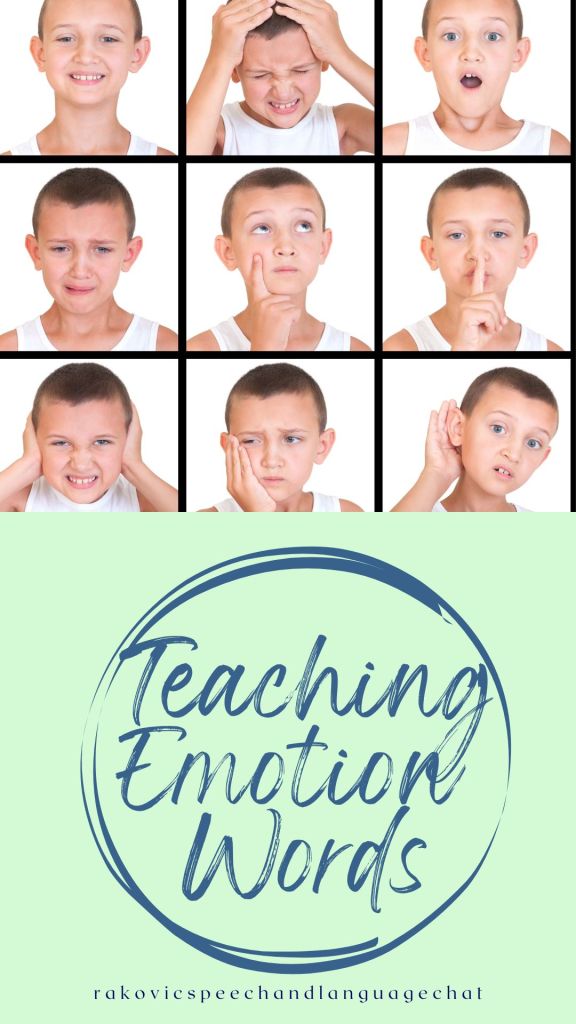
Understanding and expressing emotions is a crucial part of social communication. For students on the autism spectrum, especially those who crave sensory input, teaching feeling words and how to express emotions can be challenging yet rewarding. A multi-sensory approach can make this learning process more engaging and effective. Here’s a guide on how to teach feeling words and how to say how one feels using various sensory modalities.
Visual Supports
Emotion Cards
- Emotion Flashcards: Use cards with pictures of different facial expressions corresponding to various emotions. Ensure the cards are colorful and visually appealing to grab the student’s attention.
- Emotion Wheel: Create an emotion wheel that visually categorizes different emotions. The student can spin the wheel and match feelings to situations.
Social Stories
- Personalized Stories: Develop social stories that include the student’s experiences and illustrate how different emotions are felt and expressed in various scenarios.
Auditory Supports

Emotion Songs
- Sing About Emotions: Use songs that describe different feelings. Songs with repetitive and simple lyrics help reinforce the words and their meanings.
- Sound Effects: Pair feeling words with appropriate sound effects. For example, a sad emotion could be paired with a slow, melancholic tune, while a happy emotion could be paired with upbeat music.
Voice Recording
- Record and Play Back: Record the student saying different feeling words and play them back. This helps the student hear and practice the pronunciation of each word.
Tactile Supports
Sensory Bins
- Emotion Sensory Bins: Create sensory bins filled with items that represent different emotions. For example, a “happy” bin might include soft, squishy items, while an “angry” bin might have more rigid, spiky items.
- Touch and Feel Books: Use books with textures that match the emotions described. For example, a book about feeling scared might include a page with a rough, bumpy texture.
Feeling Faces
- DIY Faces: Provide materials like playdough or clay for the student to create facial expressions representing different emotions. This hands-on activity can help reinforce the connection between words and feelings.
Kinesthetic Supports

Emotion Charades
- Acting Out Emotions: Play a game of charades where the student acts out different emotions. This encourages the student to physically express feelings, aiding in understanding and communication.
- Movement Activities: Incorporate movements that correspond with emotions. For example, jumping for joy or stomping for anger.
Olfactory and Gustatory Supports
Scented Emotions
- Scented Markers: Use scented markers to draw faces representing different emotions. Each scent can be associated with a specific feeling, adding an olfactory dimension to the learning process.
- Taste Association: If appropriate, use small, safe snacks that the student likes as rewards for correctly identifying or expressing emotions.
Step-by-Step Approach
Introduce Emotions:
- Start with basic emotions like happy, sad, angry, and scared.
- Use emotion cards, songs, and social stories to introduce these feelings.
Model and Practice:
- Model how to express each emotion verbally and through facial expressions.
- Engage in activities like charades or role-playing to practice these expressions.
Multi-Sensory Reinforcement:
- Incorporate sensory bins, tactile books, and other hands-on materials to reinforce learning.
- Use scent and taste rewards to make the learning process enjoyable and memorable.
Repetition and Consistency:
- Regularly revisit and practice emotion words and expressions across different settings.
- Be consistent with the use of visual, auditory, tactile, kinesthetic, olfactory, and gustatory supports.
Positive Reinforcement:
- Celebrate successes with positive feedback and preferred sensory rewards.
- Encourage the student to express their feelings in a supportive and understanding environment.
Teaching feeling words and how to express emotions to a student on the autism spectrum who craves sensory input can be a fulfilling experience when using a multi-sensory approach. By engaging multiple senses, you can create a dynamic and supportive learning environment that helps the student understand and communicate their emotions effectively. Remember to be patient, consistent, and adaptable to the student’s needs and preferences.
Related blogs:
- THE POWER OF PICTURE BOOKS: SUPPORTING SEL IN THE CLASSROOM
- THREE LITTLE KITTENS INTERACTIVE ADAPTED
- CONSCIOUS DISCIPLINE: SOCIAL EMOTIONAL CURRICULUM BREATHING TECHNIQUES











